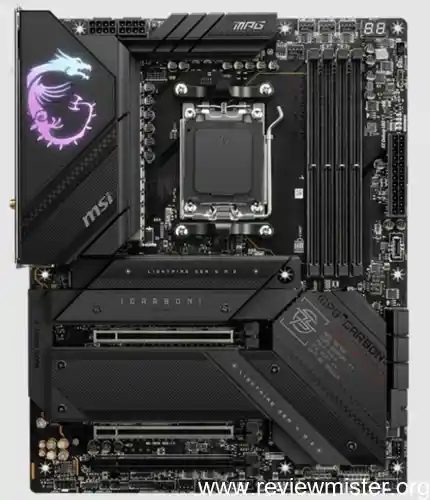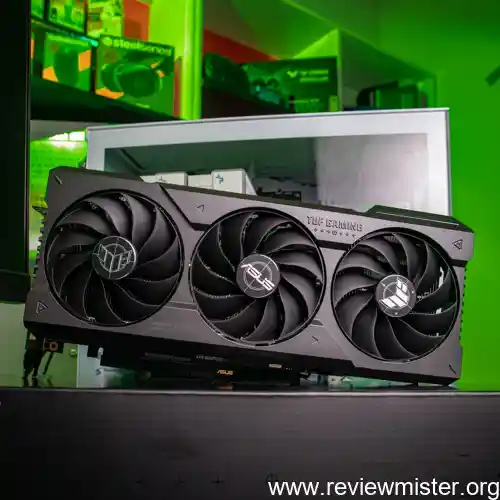Building a PC for streaming isn’t just about picking powerful parts—it’s about understanding how each component contributes to a seamless, professional broadcast experience. If you’re serious about streaming, whether it’s gaming, creative content, or live tutorials, the choices you make during your build will directly impact your stream’s quality, stability, and long-term reliability. I’ve spent years testing and refining streaming setups, and I want to share what really matters when selecting CPUs, RAM, GPUs, and storage to match your streaming goals. You’ll learn how to balance performance with budget, avoid common compatibility pitfalls, and ensure your new system isn’t held back by overlooked details like cooling, power delivery, or network requirements. By focusing on the right specifications and setup, you can create a streaming PC that’s ready to handle anything you throw at it—without frustrating technical hiccups or performance drops. Let’s break down what goes into a truly effective streaming build, so you can start broadcasting with confidence and professionalism.
What Are the Minimum and Recommended Specifications for a Streaming PC?
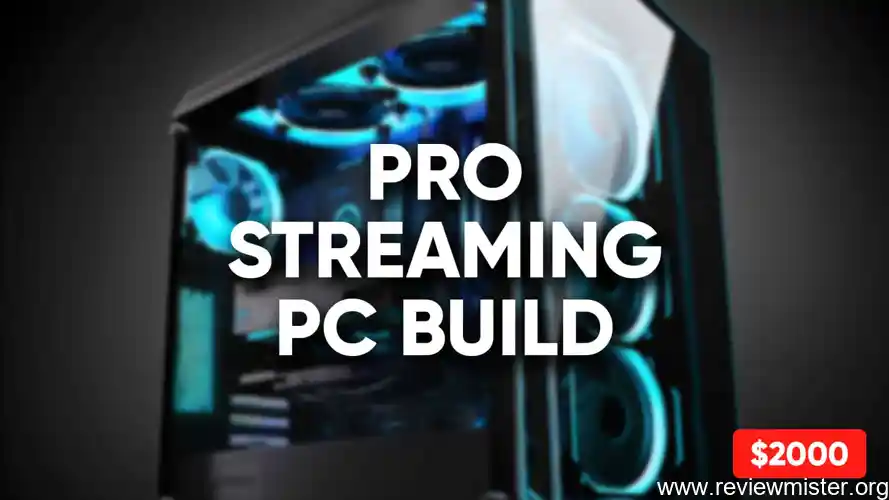
When you want to build a PC for streaming, nailing down the right specs is a game-changer for a smooth experience. If you’re just starting out, you can get by with entry-level hardware, but going for higher specs makes everything—gameplay, encoding, and multitasking—feel effortless. I’ve learned that the bare minimum might get your stream online, but if you want reliability and the ability to handle modern games plus high-quality video output, it’s worth investing in recommended specs. Let’s be real, the right choices here mean fewer headaches and more time actually creating content for your audience.
What CPU models provide optimal performance for streaming?
When you build a PC for streaming, making the right choices with your specs is the difference between a smooth show and a choppy disaster. For minimum specs, you’ll want at least a quad-core CPU like an Intel i5 or Ryzen 5, 8GB of RAM, and a dedicated GPU such as an NVIDIA GTX 1650. But if you’re aiming for hassle-free streaming—especially with gameplay—bumping up to a 6-core CPU, 16GB RAM, and an RTX 3060 or AMD equivalent will give you plenty of headroom. Pair that with an SSD for your OS and games, and you’ll be set for stable, high-quality streams.
How much RAM is required for stable streaming sessions?
If you’re ready to build a PC for streaming, knowing the minimum and recommended specs makes all the difference. At the very least, you’ll want a recent quad-core CPU, 8GB of RAM, a dedicated GPU, and an SSD to keep things running smoothly. But if you want buttery-smooth streams and future-proofing, aim for a six-core or higher processor like AMD Ryzen 5 or Intel Core i5, 16GB RAM, and an RTX or RX series graphics card. Fast NVMe storage is a bonus for load times. This setup lets you juggle your games and stream without stutters, giving your viewers a seamless experience.
What GPU options support 1080p and 4K streaming?
When you build a PC for streaming, you want to hit that sweet spot between power and value. At the bare minimum, you’ll need a quad-core CPU like the Intel Core i5 or Ryzen 5, 8GB of RAM, and a dedicated GPU such as the NVIDIA GTX 1660 just to keep your stream running smoothly at 720p or 1080p. But if you’re aiming for a stable, high-quality stream—think 1080p60 or even dipping your toes into 4K—you’ll want to step up to at least a 6-core processor, 16GB RAM, and a stronger GPU like the RTX 3060 or AMD RX 6700 XT. It’s all about making sure your setup can handle both gaming and streaming at the same time, without dropping frames or running into hiccups.
What storage types and capacities support fast read/write speeds?
If you want to build a PC for streaming, you’ve got to pay close attention to your hardware specs right from the start. At a minimum, you’re looking at a quad-core CPU (like Intel i5 or Ryzen 5), 8GB of RAM, and a dedicated graphics card such as a GTX 1650. But if you want smooth, professional streams—especially at 1080p or higher—you’ll want at least a 6-core CPU, 16GB RAM, and a GPU like the RTX 3060 or RX 6700 XT. Don’t forget fast SSD storage for quick game and file loading. These specs make sure your stream runs stable and looks sharp for your viewers.
Which Motherboards and Power Supplies Are Compatible with Streaming Builds?
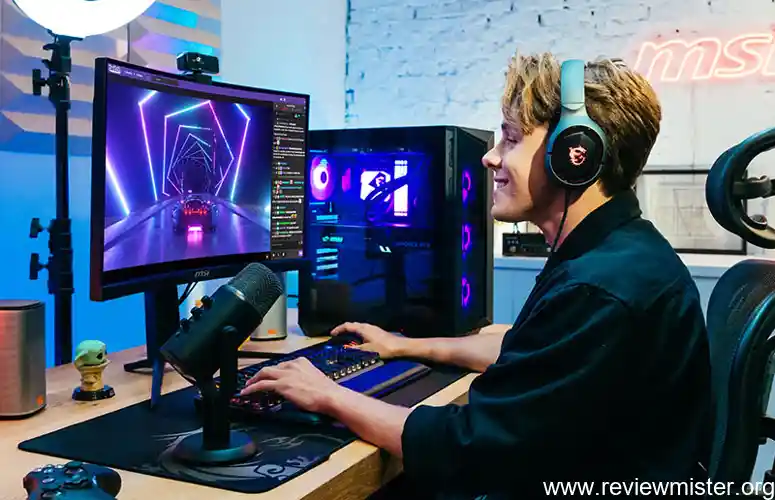
When you build a PC for streaming, your choice of motherboard and power supply can make or break your setup. I always look for a motherboard that not only supports my chosen CPU and GPU but also offers enough slots for RAM and expansion cards, because streaming often means running multiple devices at once. You’ll want solid VRM quality to keep everything stable when you’re pushing your system hard during live broadcasts. As for power supplies, don’t skimp—choose a reliable unit with enough wattage and the right connectors, so your build stays powered and safe even when all your gear is working overtime.
What motherboard chipsets support multi-GPU setups for streaming?
When you build a PC for streaming, picking the right motherboard and power supply is like laying a solid foundation for your house. You’ll want a motherboard that matches your chosen CPU (Intel or AMD), offers enough PCIe slots for your graphics card and capture card, and has plenty of USB ports for all your gear. Look for reliable chipsets like Intel Z790 or AMD B650, especially if you plan on upgrading later. As for the power supply, don’t skimp—get a unit with enough wattage (usually 650W or more) and an 80 PLUS certification for stable, efficient power delivery while you stream for hours.
How does power supply wattage impact streaming reliability?
When you build a PC for streaming, picking the right motherboard and power supply is like laying a solid foundation for your setup. You want a motherboard that matches your chosen CPU (Intel or AMD), supports enough RAM slots, and has plenty of USB ports for all your streaming gear. For power, don’t cheap out—choose a reliable PSU with enough wattage to handle your components and possible future upgrades. Modular power supplies make cable management way easier, which keeps your case tidy and airflow smooth. Always double-check compatibility between your motherboard, case size, and power supply to avoid headaches later.
What form factors fit common streaming PC cases?
When you build a PC for streaming, picking the right motherboard and power supply is like choosing a solid foundation for your house—you want stability and room to grow. I always look for motherboards that support the latest CPUs and have enough PCIe slots for future upgrades or capture cards. Chipsets like Intel Z790 or AMD X670 are great for streaming setups, especially if you want multiple GPUs or lots of USB ports for peripherals. For power supplies, I never skimp—an 80+ Gold or Platinum unit with at least 650W is my go-to, ensuring smooth performance and peace of mind during long live sessions.
Which Capture Cards and Peripherals Enhance Streaming Quality?
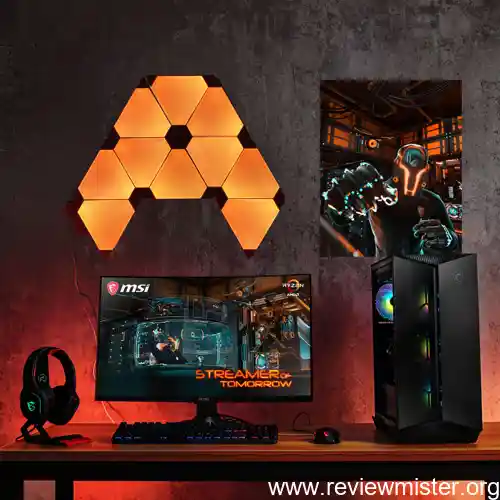
When you build a PC for streaming, picking the right capture cards and peripherals is like giving your setup a turbo boost. If you want your live streams to look and sound professional, you can’t just rely on your main hardware—you need gear that makes your gameplay and commentary shine. Whether you’re grabbing footage from a console or another PC, a solid capture card handles the job with less lag and better clarity. And let’s not forget things like microphones, webcams, and monitors, which all add up to a smoother, higher-quality stream that keeps your viewers coming back for more.
What external and internal capture cards support low-latency streaming?
When you build a PC for streaming, the right capture cards and peripherals can take your stream’s quality to the next level. If you’re planning to stream console gameplay or use a dual-PC setup, you’ll want a capture card—internal options like Elgato or AverMedia models handle high resolutions and low-latency feeds, making your content crisp and smooth. Don’t forget about peripherals: a good USB or XLR microphone brings out your voice, and a quality webcam keeps you looking sharp on camera. Adding a second monitor can really streamline your workflow, letting you manage chat and stream controls without missing a beat.
Which microphones and webcams deliver high audio and video fidelity?
When you build a PC for streaming, picking the right capture card and peripherals can make a massive difference in your stream’s quality and your own experience. Capture cards—whether internal like the Elgato PCIe models or external USB options—are key if you want to stream gameplay from a console or a second PC with minimal lag. You’ll also want to invest in a solid microphone for crisp, clear audio and a webcam that handles low-light well for a sharp, professional look. Don’t overlook dual monitors either; they make managing chat and stream controls feel effortless while you focus on entertaining your viewers.
How do dual-monitor setups improve streaming workflows?
When you build a PC for streaming, picking the right capture card and peripherals can make a huge difference in your broadcast quality. I’ve noticed that using a reliable internal or external capture card, like those from Elgato or AVerMedia, really cuts down on latency and keeps video smooth—especially if you’re streaming from a console or a dual-PC setup. Pair that with a clear USB or XLR microphone for crisp audio, and a good webcam for sharp visuals, and your stream instantly feels more professional. Dual monitors also help you manage chat and stream controls without missing a beat, making everything easier for you and more enjoyable for your viewers.
How to Optimize Cooling and Noise Levels in Streaming PCs?
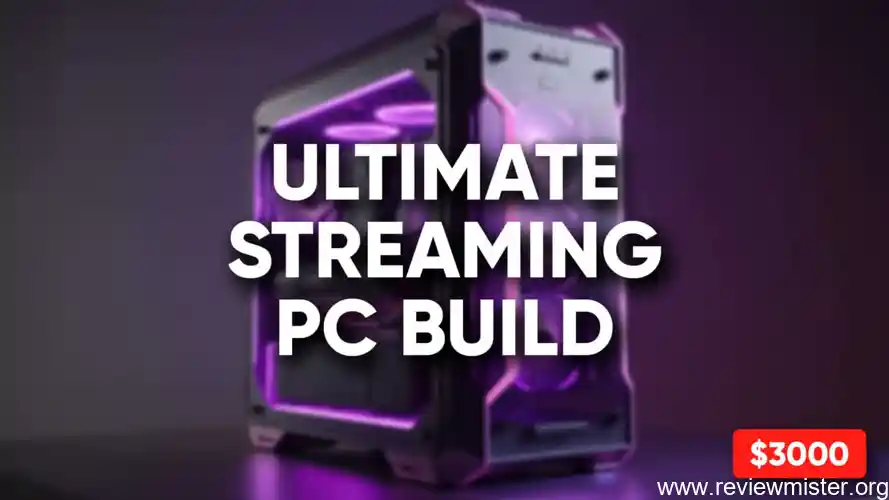
When you build a PC for streaming, cooling and noise can make or break your setup. If your machine sounds like a jet engine or overheats mid-stream, it’s a nightmare for both you and your audience. I’ve learned it’s all about finding the right balance—keeping things cool without sounding like you’re broadcasting from inside a wind tunnel. Good airflow, smart fan placement, and maybe even a quiet liquid cooler can keep your components chilled and your streams smooth. Trust me, a silent, cool streaming PC makes your sessions way more comfortable and lets your content—not fan noise—steal the show.
What air and liquid cooling solutions maintain component temperatures?
When you build a PC for streaming, managing heat and noise becomes just as important as picking the right parts. If your system gets too hot, you’ll deal with throttled performance or even sudden shutdowns right in the middle of your stream—nobody wants that! Focus on a solid mix of air or liquid cooling solutions to keep your CPU and GPU temps under control. Quiet, high-quality fans can keep things cool without sounding like a jet engine. And don’t forget smart cable management; tidy cables mean better airflow, which helps everything run smoother and quieter while you’re live.
How do case fan configurations affect streaming PC acoustics?
When you build a PC for streaming, keeping your system cool and quiet is just as important as raw power. Nobody wants their fans drowning out your voice or your gear overheating mid-stream, right? I always make sure to use efficient air or liquid coolers—those help keep the CPU and GPU temps down even during marathon sessions. You’ll want a case with good airflow and enough space for proper cable management, which really helps with ventilation. Quiet, high-quality fans reduce annoying background noise, so your viewers hear you—not your PC. Trust me, a cool and quiet rig makes streaming way more enjoyable for both of us.
What cable management techniques improve airflow and aesthetics?
When you build a PC for streaming, keeping your system cool and quiet is crucial for both performance and comfort. I always make sure to choose the right balance between airflow and noise by picking quality air or liquid coolers and setting up my case fans for optimal circulation. If your fans are too loud, it can distract both you and your viewers—nobody wants a stream that sounds like a wind tunnel, right? Cable management helps here too, letting air move freely and making your build look clean on camera. Trust me, a cool, quiet PC means smoother streams and a better experience for everyone.
What Software and Network Requirements Ensure Stream Stability?
When you build a PC for streaming, the right software and a solid network connection are your backbone for a smooth broadcast. You and I both know that even with top-tier hardware, laggy streams or software hiccups can ruin the experience for your viewers. It’s all about picking streaming software that plays nicely with your operating system and making sure your internet upload speed can handle the resolution you want—whether that’s crisp HD or buttery-smooth 4K. Don’t forget, a stable network and reliable streaming apps keep everything running seamlessly, so your focus stays on entertaining your audience, not troubleshooting tech issues.
Which streaming software applications are most compatible with Windows and macOS?
When you build a PC for streaming, your software and network setup are just as important as your hardware. I always make sure to pick streaming software like OBS Studio or Streamlabs, since they’re reliable and work well with both Windows and macOS. You’ll need a stable internet connection with at least 6 Mbps upload for 1080p streaming—double that if you’re aiming for 4K. Don’t forget to wire up with Ethernet instead of Wi-Fi for fewer hiccups. Tweak your encoder settings and bitrate for your internet speed, and you’ll keep your streams smooth and stable for everyone watching.
What upload speeds are necessary for HD and 4K streaming?
When you build a PC for streaming, picking the right software and making sure your network is up to speed can make or break your experience. You’ll want to use reliable streaming programs like OBS Studio or Streamlabs that run smoothly on Windows or macOS, so your broadcasts don’t stutter or crash. Just as important is your internet connection—aim for at least 6 Mbps upload speed for 1080p streaming, and even higher for 4K. Don’t forget to wire up with Ethernet if you can; Wi-Fi can be flaky and ruin a good stream. Stable software and a fast, consistent network keep your stream looking pro.
How to configure OBS Studio for dual-PC streaming setups?
When you build a PC for streaming, having the right software and network setup is just as important as picking your hardware. You’ll want to use reliable streaming software like OBS Studio or Streamlabs, which work smoothly on both Windows and macOS. For a steady, high-quality stream, your internet upload speed should be at least 6 Mbps for 1080p and upwards of 20 Mbps for 4K streams—don’t trust the Wi-Fi alone, grab an Ethernet cable for extra stability. Also, make sure your PC’s network drivers are up to date and tweak your streaming app’s bitrate settings to match your internet speed for a buffer-free experience.
What Are the Best Practices for Assembling and Testing a Streaming PC?
When you build a PC for streaming, the way you put everything together and test it out can make or break your experience. I’ve learned that taking things step by step, double-checking connections, and making sure every part is seated properly helps you avoid those nightmare troubleshooting sessions later. Once your PC is assembled, don’t just fire it up and start streaming—run some stress tests, monitor your temperatures, and check for stability. Trust me, catching small hiccups now means you won’t suddenly freeze up mid-stream. A careful approach here saves you from headaches and keeps your streaming setup smooth and reliable.
How to install and configure each component for first boot?
When you build a PC for streaming, assembling everything with care makes all the difference. Lay out your components, ground yourself to avoid static, and take your time connecting each part—motherboard, CPU, RAM, GPU, and storage—making sure cables are tidy for airflow. Once it’s built, double-check connections before your first boot. After installing your operating system and drivers, run stress tests like Prime95 or AIDA64 to spot any issues early. Don’t forget to monitor temperatures and system stability while streaming test sessions. This way, you’ll catch potential hiccups before your viewers do and ensure your streaming PC is reliable every time you go live.
What stress-testing tools validate streaming PC stability?
When you build a PC for streaming, take your time and double-check every step as you assemble the parts. Lay everything out, ground yourself to avoid static, and follow your motherboard manual closely—trust me, it saves headaches later. Once everything’s in place, power up and jump straight into the BIOS to check that your system recognizes all components. Don’t skip installing the latest drivers for your GPU and capture card. Before you go live, stress-test your PC with tools like Prime95 or AIDA64 and use real-time monitoring software to keep an eye on temps and performance. That way, you’re ready for smooth, uninterrupted streams.
How to benchmark and monitor streaming performance in real-time?
When you build a PC for streaming, it’s crucial to take your time during assembly—double-check each connection, ground yourself to avoid static damage, and follow your motherboard’s manual for proper component installation. After you’ve pieced everything together, don’t just power on and hope for the best. Run memory and CPU stress tests, like MemTest86 and Prime95, to catch any early issues. It’s also smart to monitor temperatures and fan speeds with software like HWMonitor. Testing everything before your first stream ensures you won’t run into nasty surprises in the middle of a broadcast, saving you plenty of frustration down the road.
Q1. What are the essential components needed to build a PC for streaming?
Ans: You need a strong CPU, dedicated GPU, at least 16GB RAM, SSD storage, a quality motherboard, and a reliable power supply.
Q2. Do I need a separate graphics card for streaming, or is integrated graphics enough?
Ans: A dedicated graphics card is highly recommended for smooth streaming and gaming performance.
Q3. How much RAM is optimal for a streaming PC build?
Ans: 16GB of RAM is the minimum recommended, but 32GB is ideal for multitasking while streaming.
Q4. Can I build a budget PC for streaming, or is a high-end build necessary?
Ans: You can build a capable budget streaming PC, but higher-end parts offer better performance and stream quality.
Q5. Should I prioritize CPU or GPU when building a PC for streaming?
Ans: Prioritize a strong CPU for streaming, but a good GPU is also important for gaming and encoding.

